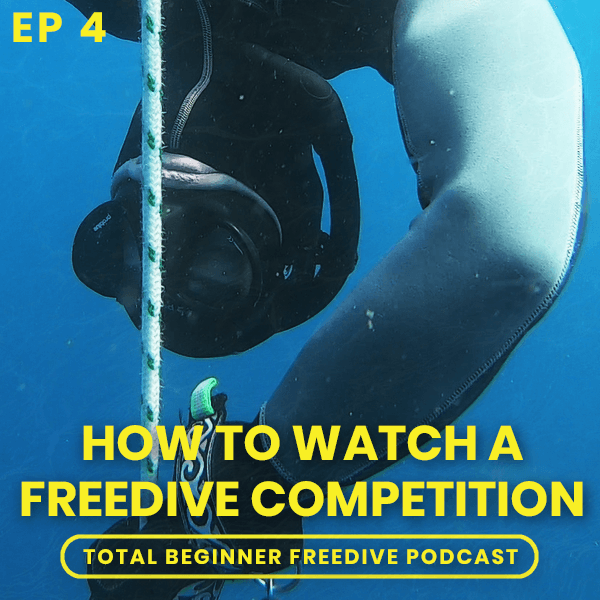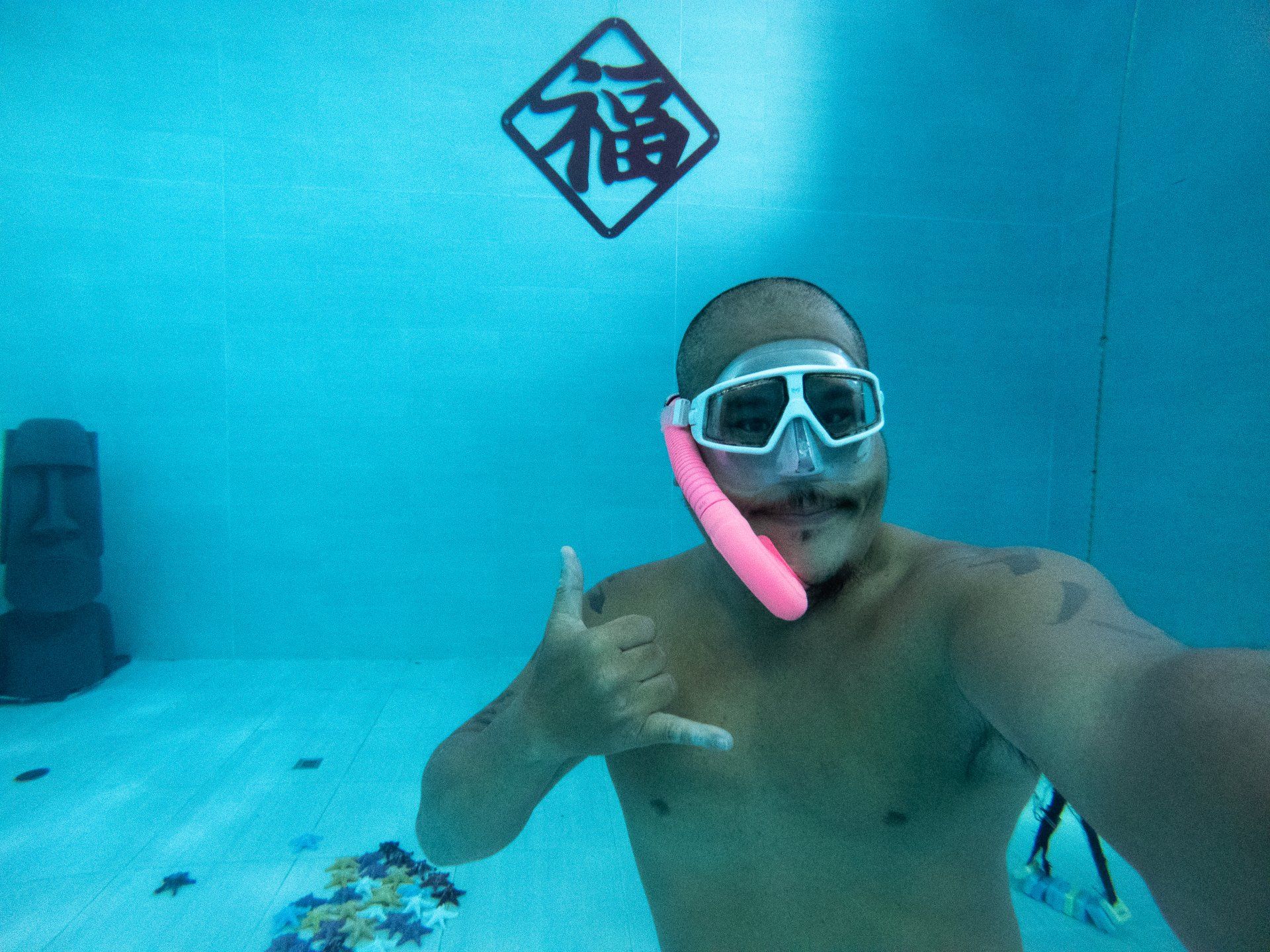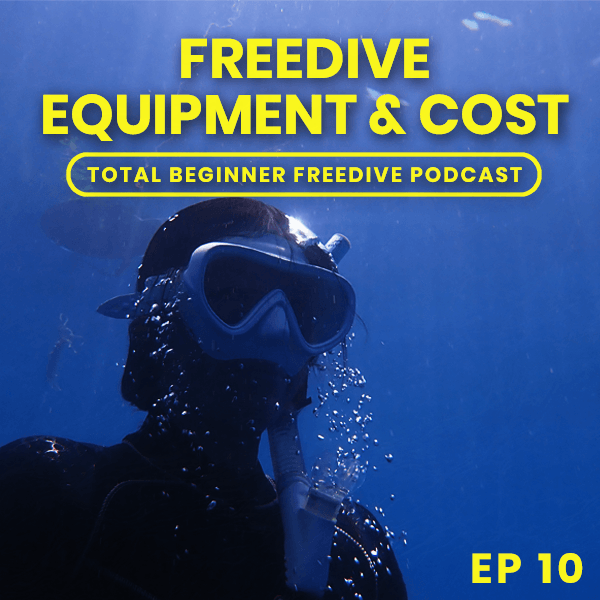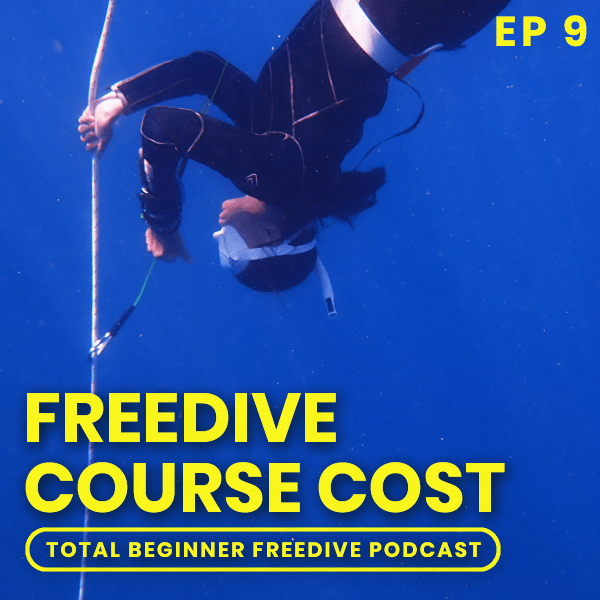Raymond Ko • July 8, 2021
How to Watch a Freedive Competition

Show Notes
With one of the premier freediving depth competitions around the corner, Vertical Blue, I moved up this episode to coincide with the competition.
In this freedive competition primer you will learn about each category of diving, open top, surface protocol etc.
This podcast is brought to you by Octopus Freediving
Vertical Blue 2021 Live Feed (from July 13)
Facebook Group
Free E-book Sign Up
Free Online Freedive Safety Course
You can support this show by buying from our affiliates partners:
Waihana Wetsuits the coolest looking wetsuits using eco-friendly neoprene. Use the coupon code 0OG0UZZBLP for 15% off
Blue Cannatine - the BEST nootropic to get my brain to function optimally after diving. 10% discount with that link.
Synctuition - my favorite meditation app and I've tried A LOT
Transcripts
Hello future freedivers,
Welcome to this very special episode of The Total Beginner Podcast brought to you by our friends at Octopus Freediving, the highest quality freediving accessories on the planet.
This week is a special episode as one of the premier freediving depth competitions, Vertical Blue, starts next week and this episode will be a primer on understanding freediving depth competitions.
And that’s D-E-P-T-H not D-E-A-T-H like dying - I realized it sounded like DEATH when I re-listened to this earlier recording.
Anyways, LET’S GET STARTED - Jingle please
JINGLE
Hello again, my name is Ray aka the Freedive Nomad and today we’ll get into learning about freediving depth competitions.
The competition is separated between male and female.
There are four categories for depth.
1) Free Immersion which is pulling on the rope to aid your descent or ascent
2) Constant weight which is using a monofin to descend and this is where you will see the deepest dives. A monofin looks like a whale's tail or a bigger more rigid mermaids tail and its a much more efficient movement which uses the entire body.
3) Constant weight bifins using two standard long fins you see all freedivers wear and finally
4) Constant no fins where you do not have the aid of a rope or fins while using a modified breaststroke for your descent or ascent. This is considered the purest form of freediving.
The day prior to a dive, the competitor registers their target depth for the next day and this remains confidential until competition day.
The diver’s scheduled time to dive is called an OPEN TOP
Prior to the open top the diver will have a few minutes to mentally and physically prepare by the competition line like relaxing and taking their final breath.
If you see a diver doing funny movements with their mouth they are lung packing which is when a diver has reached the physical limits of how much air they can inhale using their respiratory muscles and then suck or sip air into their mouths and push it into their lungs to pack more air in. Do not try this, this is a very advanced technique and risk severely injuring your lungs. It takes months and years of practice and adaptation to be able to do this safely.
The competitors have only 30 seconds past their open top time to start their dive otherwise they will be penalized.
They then start their dive propelling deeper.
At about 30 meters when they begin their free fall or sink phase which is like it sounds, where propulsion is no longer needed to go deeper and the negative buoyancy is strong enough to pull them deeper just like gravity above the surface, only a lot slower.
For freedivers this the favorite part of the dive where they can remain still, relax, zone out into a meditative state and enjoy the dive.
Once they reach the target depth they do their turn, grab a tag to prove they got the target depth and start propelling towards the surface.
Once they reach 30-40 meters in depth is where they will be met by the first safety diver and another 1-2 safety divers will meet the diver before reaching the surface.
Once they reach the surface they have to perform a “surface protocol” which is taking off any facial equipment like their nose clip, mask or goggles, give the ok sign with their thumb and index finger and say “I’m ok” within 15 seconds of surfacing.
No one is allowed to touch them before that’s why all the safety divers and people around the diver have their hands above the surface.
The competitors are allowed one coach nearby which is why sometimes you’ll hear them screaming “breathe” as a diver can sometimes be disoriented when they are extremely hypoxic.
Finally, the judge will issue either a white card which means a clean dive and 100% of the depth reached will count, a yellow card which means the dive counts with penalties or a red card meaning the dive doesn’t count at all and that’s generally when you black out.
Penalties can be starting your dive past the allotted time past open top, touching the rope where you aren’t allowed or not reaching your announced depth.
It was only a few years ago that we are able to watch the full dive with the invention of
DiveEye which is an underwater drone camera which follows the diver throughout their whole dive. Previously, and I believe there still is, an official with sonar equipment which regularly announces the diver’s depth.
If you are watching on the internet like on Youtube, on the bottom left of the screen you’ll see the country and name of competitor, their announced depth, their current depth and time. The time is important for the viewer so you can see whether they are going slow or not, generally competitors aim for about 1 meter per second.
And that’s it.
END
That’s if for today’s podcast, and I hope you find this helpful when you watch freedive competitions from now on. I believe Vertical Blue should have a live feed on YouTube so you can enjoy watching it live for free.
Staying on the theme of Blue, I wanted to introduce a product called Blue Cannatine. Diving can be pretty tiring for me but I still need to work for hours on the computer after diving. That’s where I use Blue Cannatine, a supplement for the brain and it lights my mind on fire so I have intense focus and cognitive boost for hours to get my work done. To download a free ebook to find out more about the product to go freedivepodcast.com/blue.
If you find this useful, please like, share this podcast with your tribe which will help this podcast rank higher and reach more people like you.
Dive safe and never dive alone, and like, take a
freedive course.





